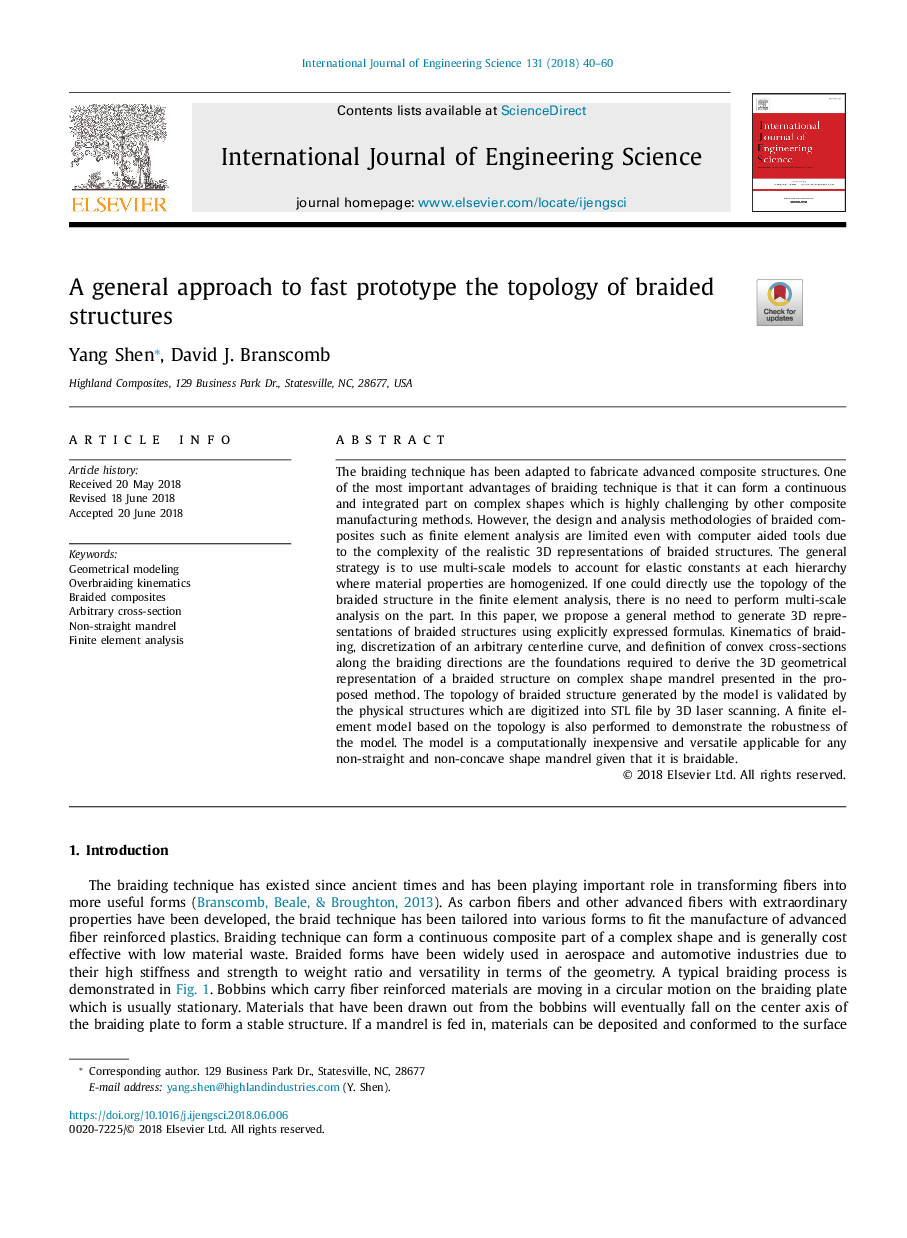| Article ID | Journal | Published Year | Pages | File Type |
|---|---|---|---|---|
| 7216227 | International Journal of Engineering Science | 2018 | 21 Pages |
Abstract
The braiding technique has been adapted to fabricate advanced composite structures. One of the most important advantages of braiding technique is that it can form a continuous and integrated part on complex shapes which is highly challenging by other composite manufacturing methods. However, the design and analysis methodologies of braided composites such as finite element analysis are limited even with computer aided tools due to the complexity of the realistic 3D representations of braided structures. The general strategy is to use multi-scale models to account for elastic constants at each hierarchy where material properties are homogenized. If one could directly use the topology of the braided structure in the finite element analysis, there is no need to perform multi-scale analysis on the part. In this paper, we propose a general method to generate 3D representations of braided structures using explicitly expressed formulas. Kinematics of braiding, discretization of an arbitrary centerline curve, and definition of convex cross-sections along the braiding directions are the foundations required to derive the 3D geometrical representation of a braided structure on complex shape mandrel presented in the proposed method. The topology of braided structure generated by the model is validated by the physical structures which are digitized into STL file by 3D laser scanning. A finite element model based on the topology is also performed to demonstrate the robustness of the model. The model is a computationally inexpensive and versatile applicable for any non-straight and non-concave shape mandrel given that it is braidable.
Related Topics
Physical Sciences and Engineering
Engineering
Engineering (General)
Authors
Yang Shen, David J. Branscomb,
